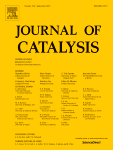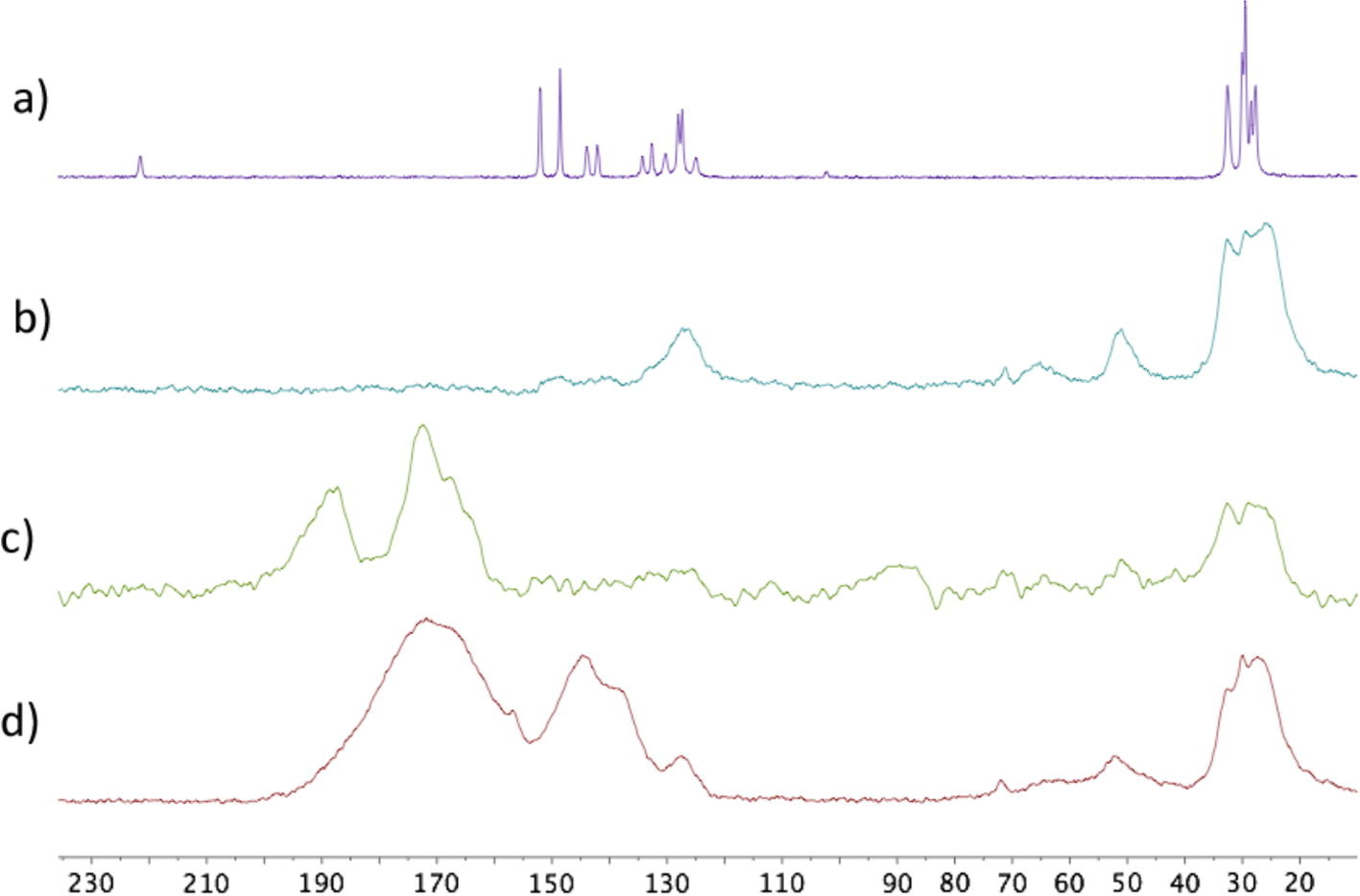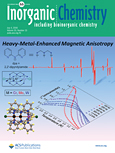 NHC-stabilised Rh nanoparticles: Surface study and application in the catalytic hydrogenation of aromatic substrates
NHC-stabilised Rh nanoparticles: Surface study and application in the catalytic hydrogenation of aromatic substrates
F. Martinez-Espinar, P. Blondeau, P. Nolis, B. Chaudret, C. Claver, S. Castillón and C. Godard
DOI: 10.1016/j.jcat.2017.08.010
Highlights
- Synthesis and characterisation of small RhNPs stabilised by N-heterocyclic carbenes.
- Evidence of the location of the ligands on the faces, edges and apexes of the NPs.
- Hydrogenation of aromatic ketones, phenols and N-heteroaromatic substrates.
- Tuning of the selectivity as a function of the reaction conditions.
- Full reduction of quinoline under mild conditions with total selectivity.
 13C{1H} CP-MAS spectra of (a) L, (b) Rh0.4, (c) Rh0.4 + CO and (d) 13C-Rh0.4.
13C{1H} CP-MAS spectra of (a) L, (b) Rh0.4, (c) Rh0.4 + CO and (d) 13C-Rh0.4.
